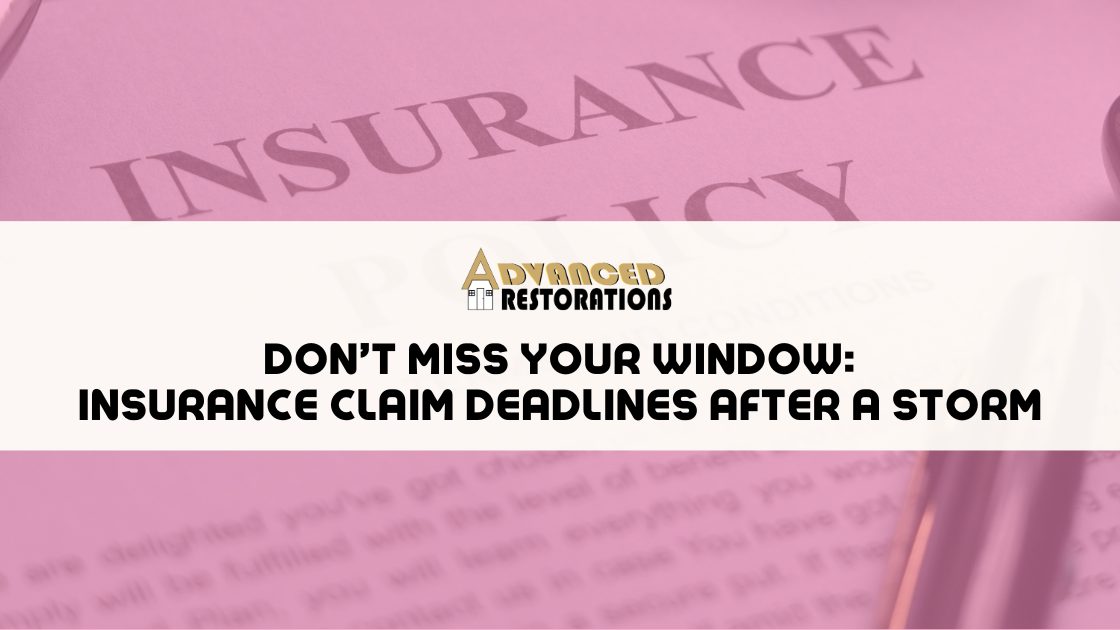
Don’t Miss Your Window: Insurance Claim Deadlines After a Storm
What Every Ozarks Homeowner Should Know About Filing Storm Damage Claims
When a major storm hits your home, the damage may not always be obvious right away. Shingles may loosen, granules may wash into your gutters, and subtle leaks may develop over time. But while the signs of storm damage can take months to surface, your opportunity to file an insurance claim has a clear expiration date.
If you suspect your home may have been damaged by hail or high winds in the past, it’s essential to understand how much time you have to take action and how to support your claim before it’s too late.
How Long Do You Have to File a Storm Damage Claim?
In Missouri, homeowners typically have up to two years from the date of a storm event to file a property damage claim. However, the exact time limit depends on your insurance policy and provider. Some policies may require claims to be filed within one year, or even sooner.
That’s why it’s critical to:
- Know when qualifying storm events occurred near your home
- Check your policy for any fine print regarding claim deadlines
- Start the inspection and documentation process as early as possible
Once the deadline passes, insurers can legally deny your claim, regardless of how valid the damage may be.
Why Homeowners Miss the Deadline
Many homeowners miss out on coverage simply because they didn’t realize their home was damaged, or that the clock was ticking. Here are a few common reasons claims don’t get filed in time:
- Delayed damage visibility: Hail impacts or wind lift can cause slow-developing leaks or weakening of roofing materials.
- Lack of documentation: Without proof of when the storm occurred, claims may get denied.
- Assuming no damage = no need to act: Damage doesn’t always show up from the ground or right after the storm.
The solution? Start with a storm history and inspection, even if you’re not sure damage occurred.
How to Identify Qualifying Storm Dates
To support your claim, you need more than just your memory of a bad storm. You need objective, third-party data that shows when, and how, your home may have been affected.
That’s where our Extreme Weather Report tool can help.
This free resource uses National Weather Service radar data, verified hail and wind reports, and advanced storm tracking to give you a detailed report of recent storm events at your home’s address.
The report includes:
- Exact dates of hail or high-wind events
- Hail size and wind speed
- Verified data points to support your insurance claim
Download your personalized storm damage report today to see if your home was affected by a qualifying event.
Don’t Wait Until a Leak Appears
The longer storm damage goes unnoticed or unaddressed, the more costly the repairs may become and the harder it will be to prove that a storm was the cause. Filing within your claim window ensures:
- You’re eligible for insurance coverage
- You can avoid out-of-pocket expenses later
- Small problems don’t turn into major structural issues
After you’ve reviewed your storm report, we recommend scheduling a free inspection with a Field Supervisor from Advanced Restorations. Our team can evaluate your roofing system, document any damage, and help you prepare for the insurance process.
Know the Dates. Protect Your Investment.
If you suspect your home may have been affected by a past storm, don’t leave it to chance. Take control of the process before your window to file a claim closes.
Download your Extreme Weather Report
Advanced Restorations is here to help you protect your home and your peace of mind.
